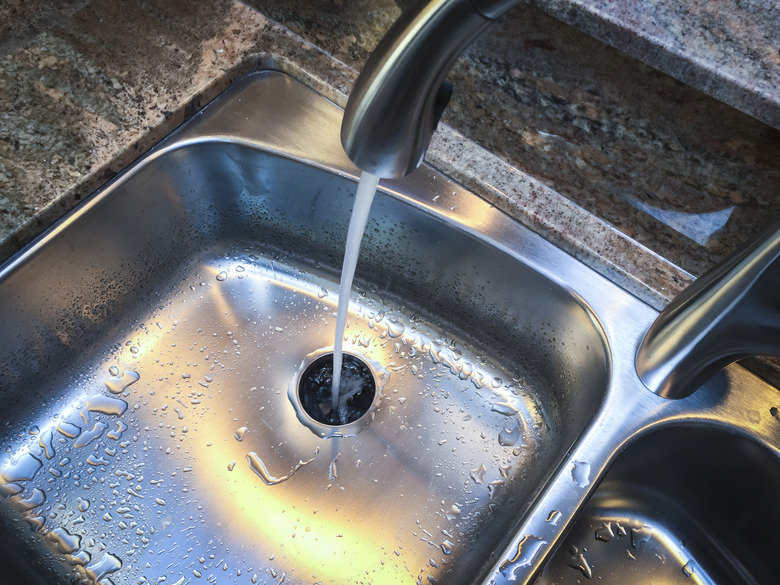Potato Peels And Garbage Disposals
Today's garbage disposals can handle a wider variety of challenges than the earliest models, but putting potato peels in garbage disposals presents an ongoing challenge. While not overly tough or fibrous, potato peels contain a high amount of starch that can clump up and form a thick paste that clogs your disposal. Intact peels can also pass through the disposal and collect in the drain trap or other piping, creating a tough clog. Instead of using the disposal, peel potatoes directly into a plastic grocery bag or onto newspapers or paper towels before discarding into a trash receptacle or relocating to your compost bin.
Potato Peels in Garbage Disposal
Potato Peels in Garbage Disposal
Garbage disposals employ whirling blades that shred organic materials into particles small enough to be washed through your kitchen plumbing pipes. No matter how strong the motor or new the blades, the starch from potato peels, or the peels themselves, can simply block the drain, making it impossible for subsequent foods to be washed through after they are shredded. Sinks drain via gravity and don't have the water pressure needed to blast out a clog, so your only option is to remove the clog.
Removing the Clog
Removing the Clog
Make sure the garbage disposal is turned off. Look down into it to see if the clog is visible, using a flashlight if necessary. If there are any visible potato peels in garbage disposal chamber, use tongs to pull them out. Never stick your hand into a disposal even if it has been unplugged from its power source.
Once the visible peels are removed, run the cold water and the disposal to see if that's enough to fix the clog. If the disposal won't turn on after being clogged, you may have to reset it or unjam it manually. To reset the disposal, find the red or black reset button and push it firmly, then try the disposal power switch.
If the disposal is jammed, make sure the power is off, then insert a disposal wrench (these often come with new disposals) or an Allen wrench into the hex-head fitting at the bottom of the disposal. Turn the wrench back and forth a few times, manually rotating the disposal's grinder plate to free the jam. Remove the wrench and test the disposal.
Cleaning the Trap
Cleaning the Trap
If water won't flow freely down the drain after you remove the potato peels in garbage disposal and run the unit after a restart, the potato starch and peel fragments may be causing a clog in the drain trap. This is the U-shaped section of pipe between the disposer and the horizontal section that leads into the wall.
Place a bucket under the trap and carefully remove the trap by loosening the slip nuts at each end of the trap, by hand or using tongue-and-groove pliers or a wrench. Rinse the trap thoroughly and replace it, tightening the nuts firmly to avoid leaks (be careful not to overtighten the nuts, which can crack them or the pipe).
Clearing a Pipe Clog
Clearing a Pipe Clog
Sometimes potato peels or starch will move through the sink and into the wall plumbing before clumping up. If this happens, you won't see a visible clog, but the disposal will still drain very sluggishly. Try using a plunger to clear the clog. If that doesn't, remove the P-trap and clear the drain pipe in the wall with a drain snake (drain auger).
